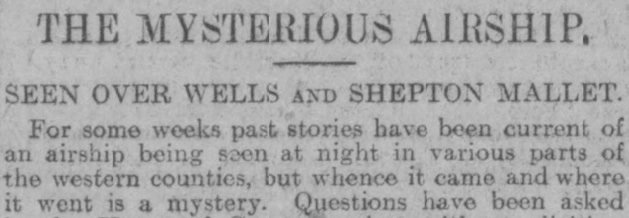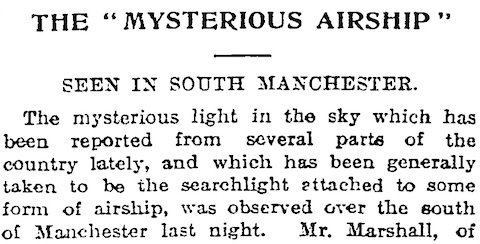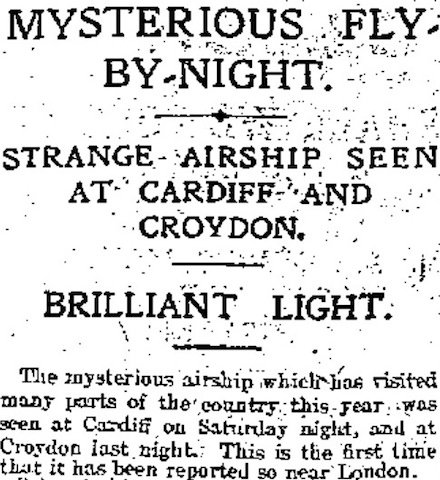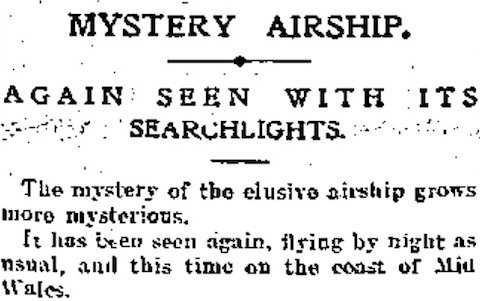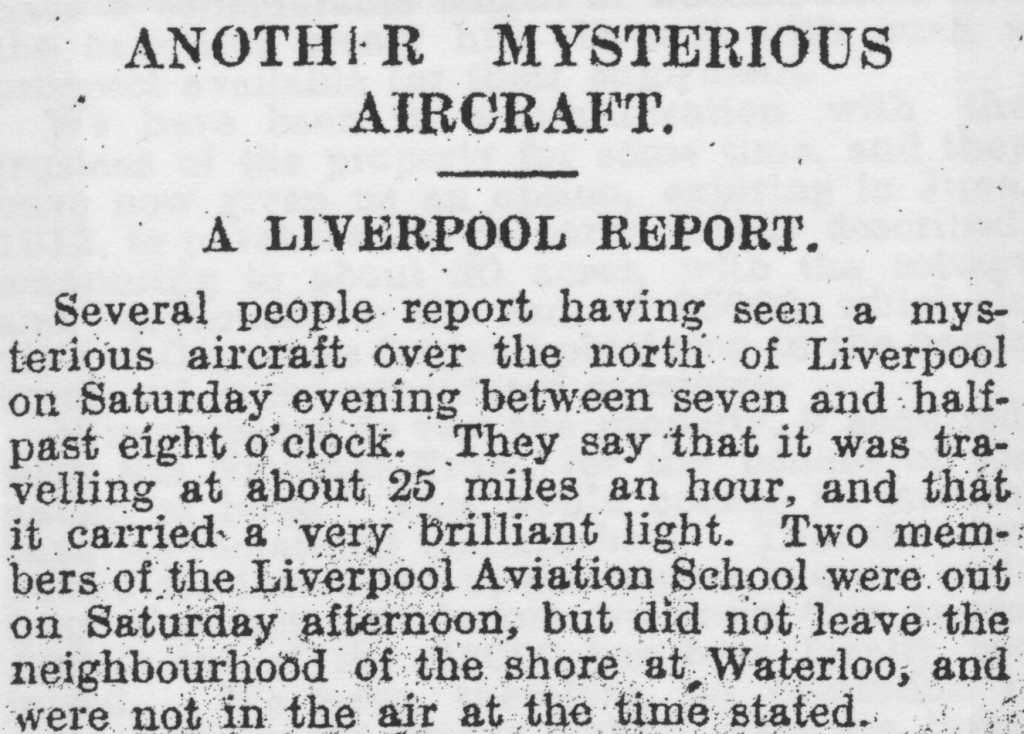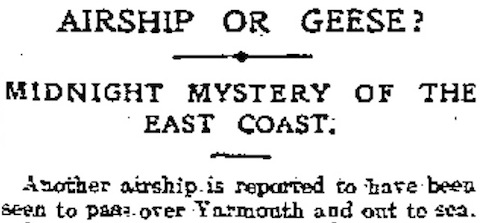Friday, 7 February 1913
The provincial press is still catching up with the South Wales mystery airships today. In fact, most of it still catching with from the sightings from the weekend — the Exeter Western Times (p. 6) and Lichfield Mercury (p. 2) have versions of the article published in the Standard on Monday about the airship seen […]


